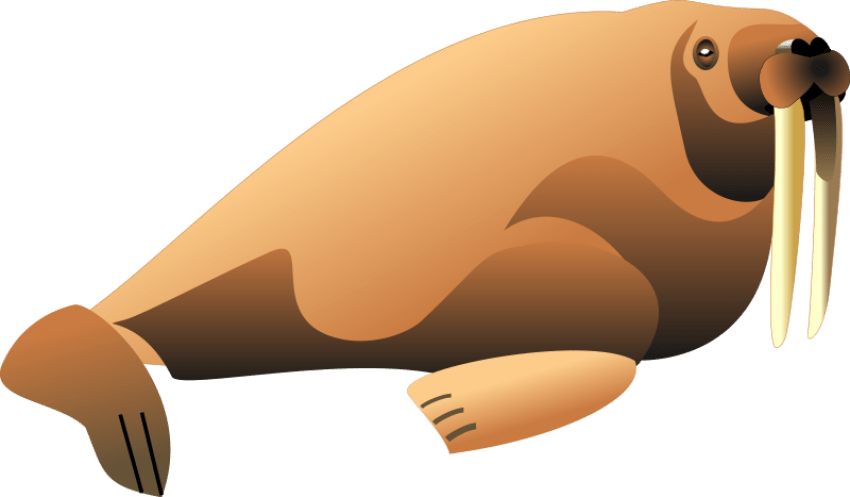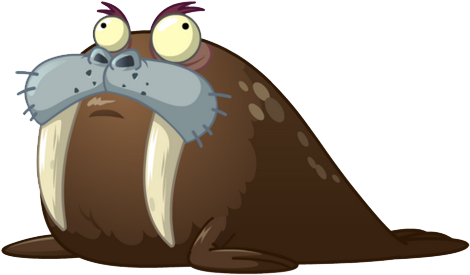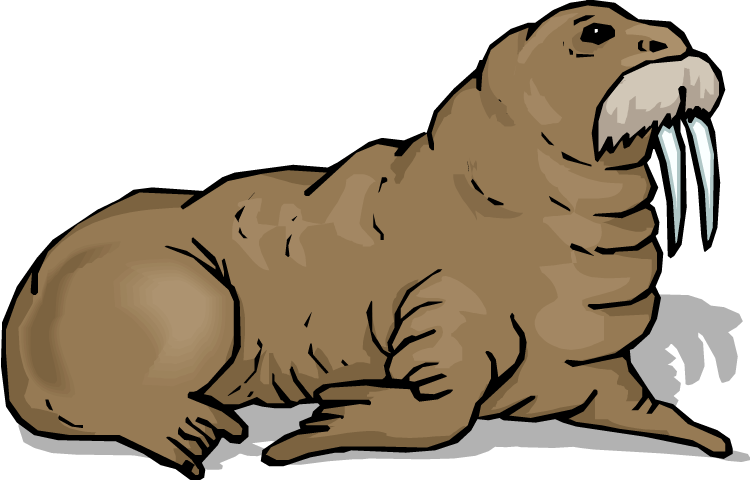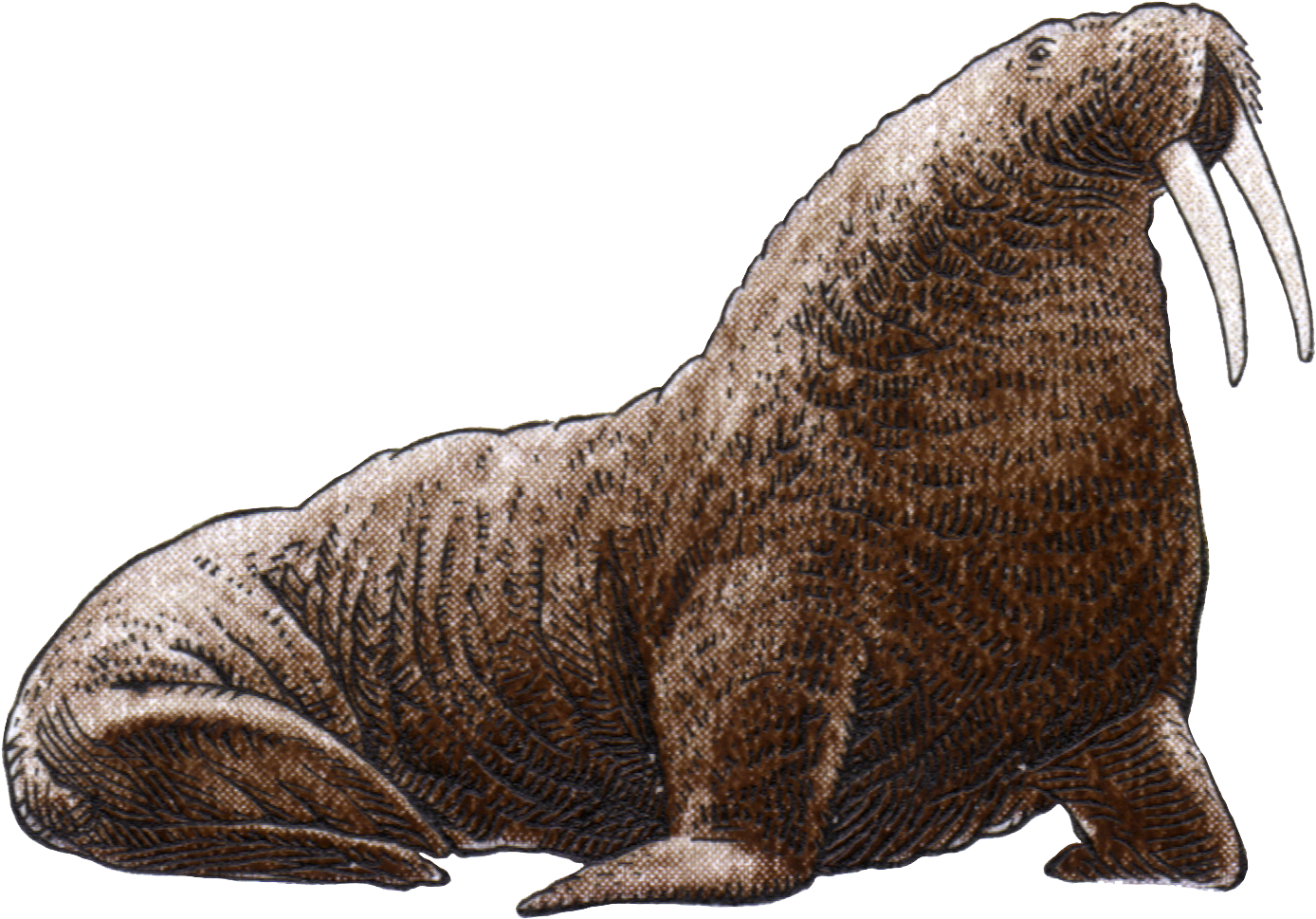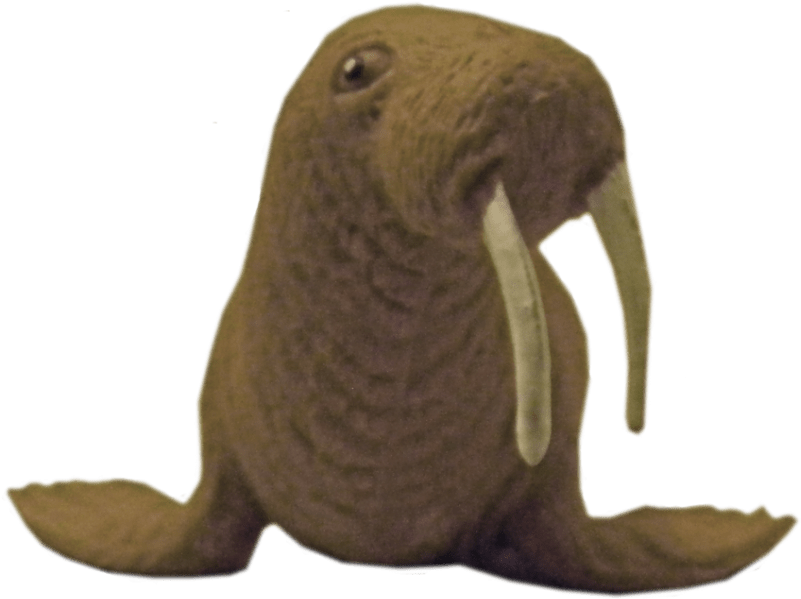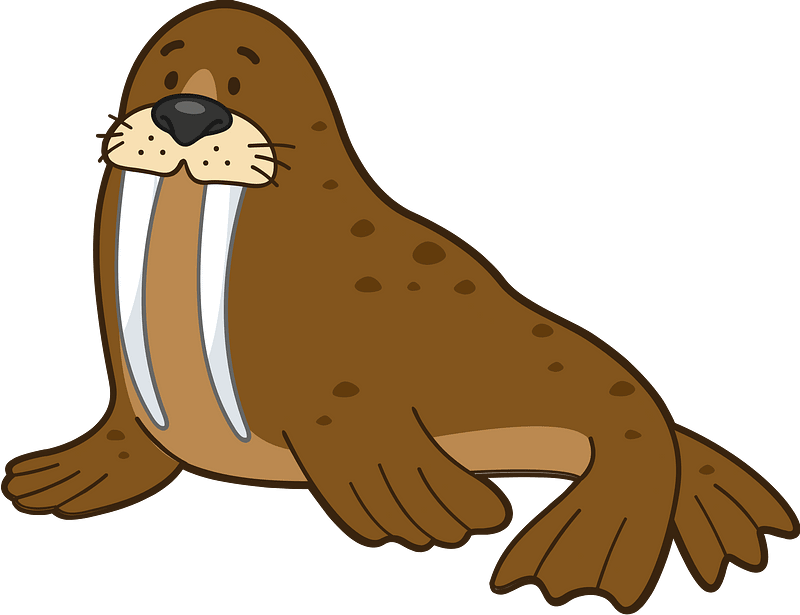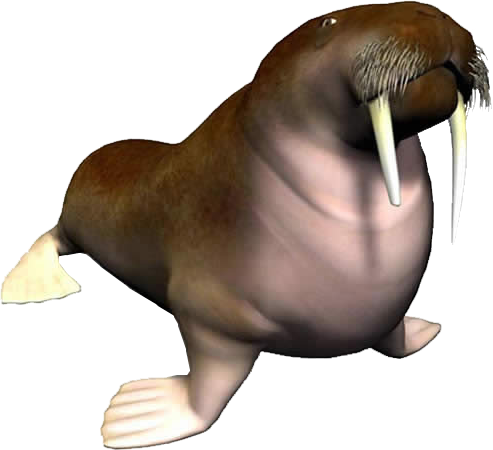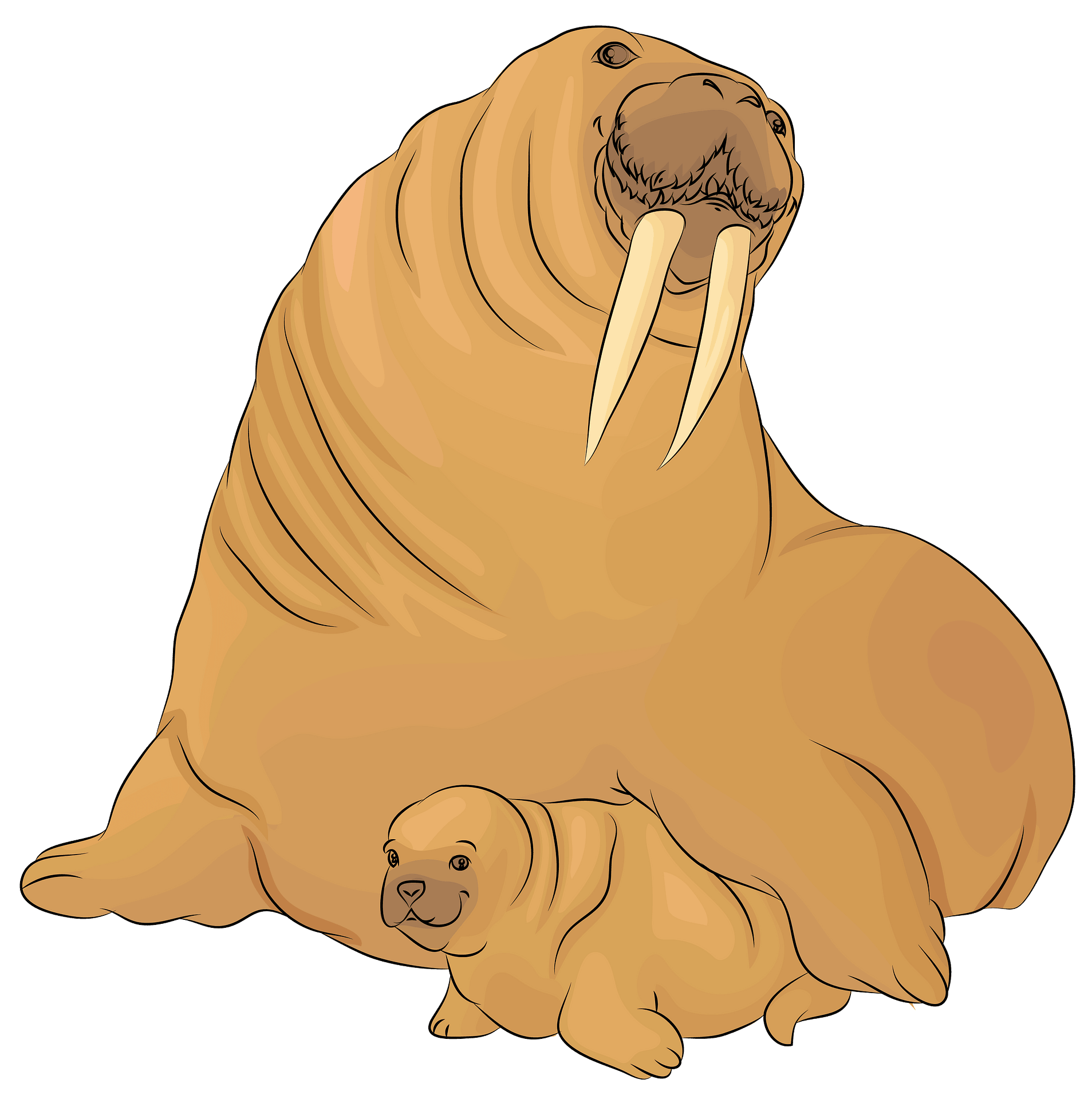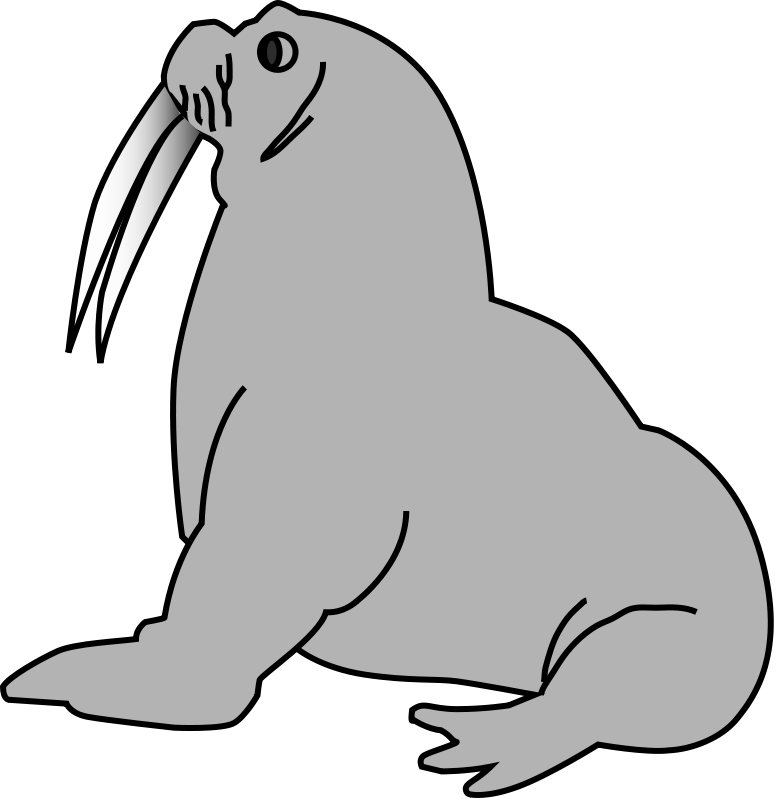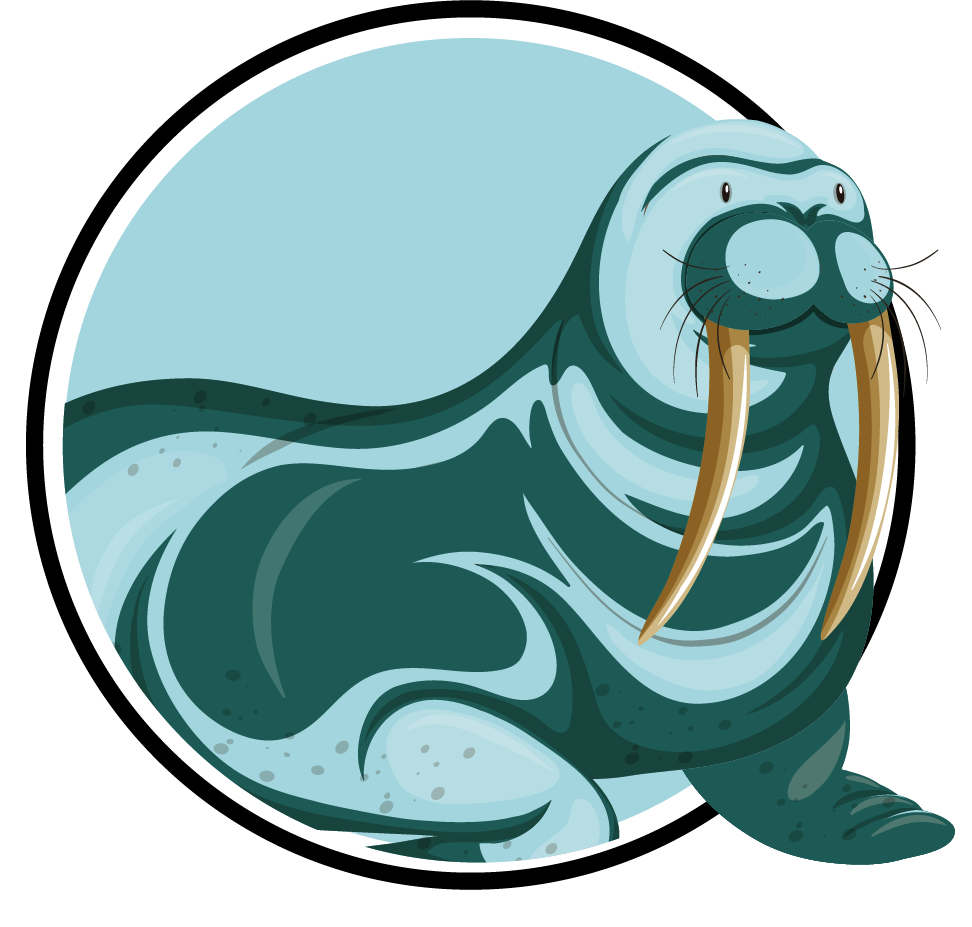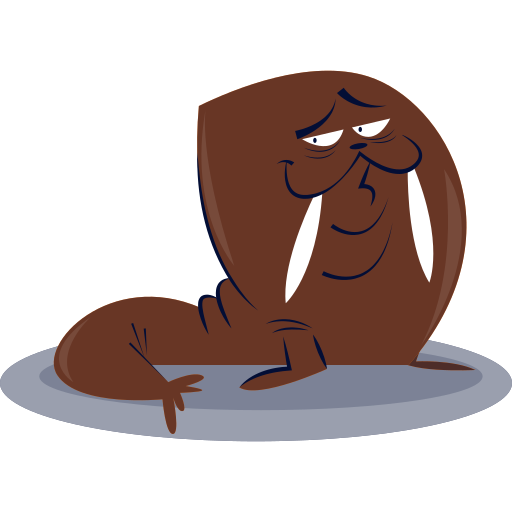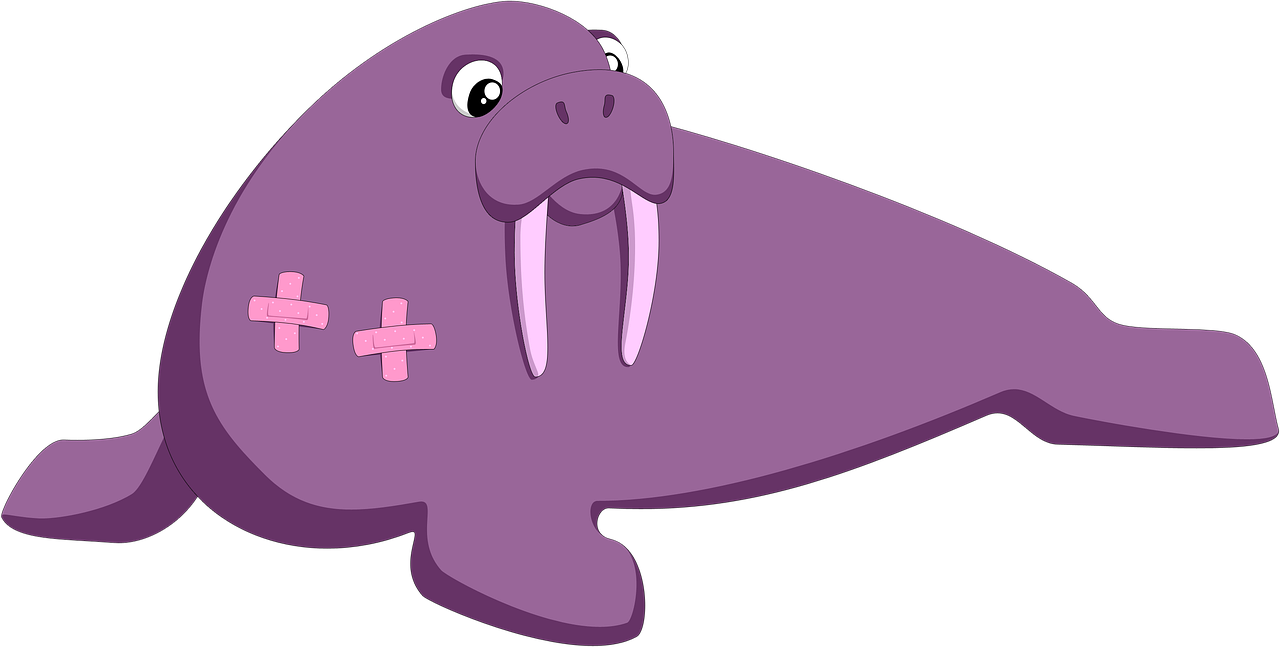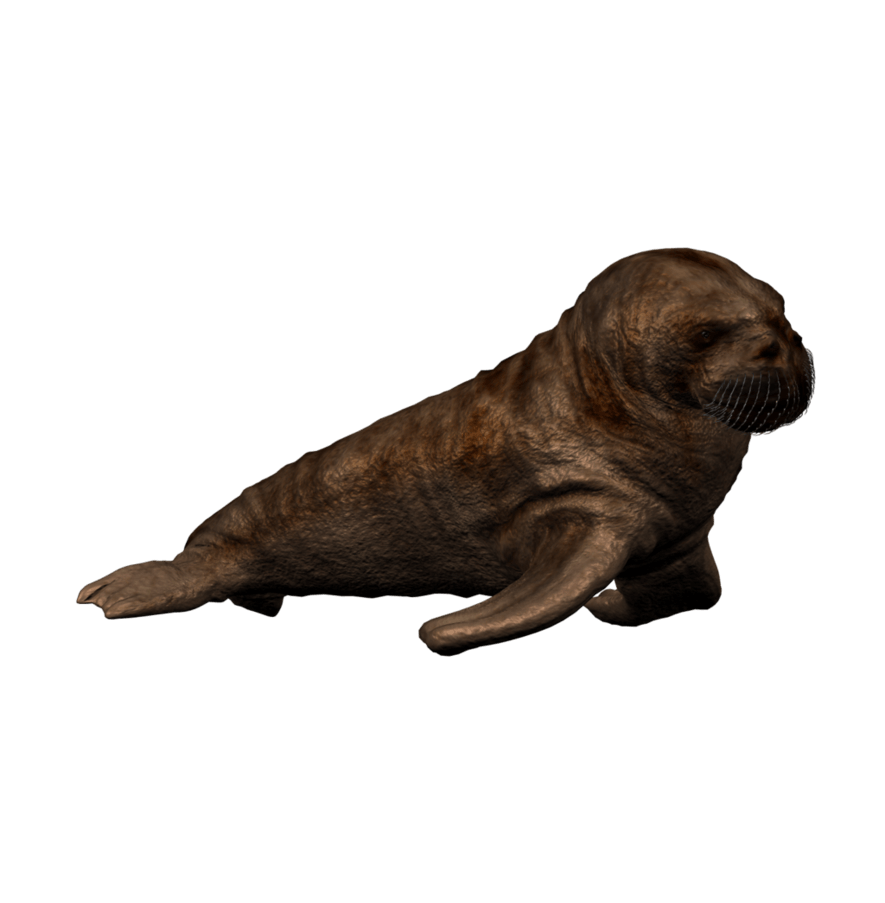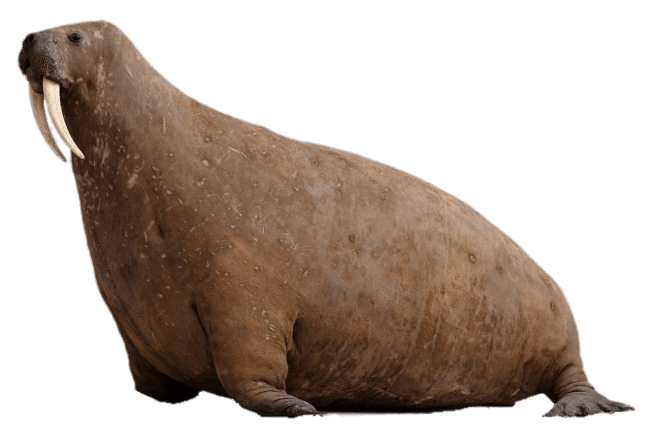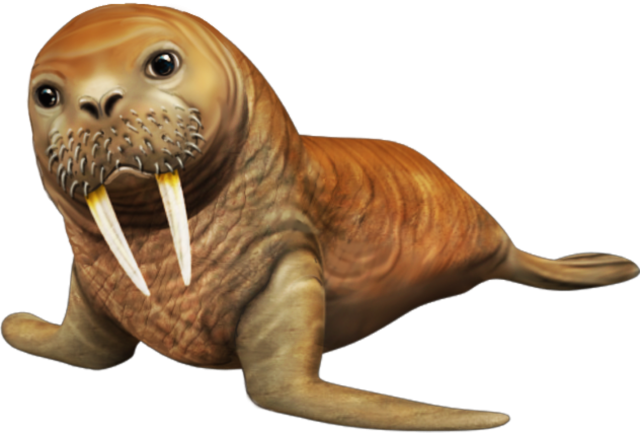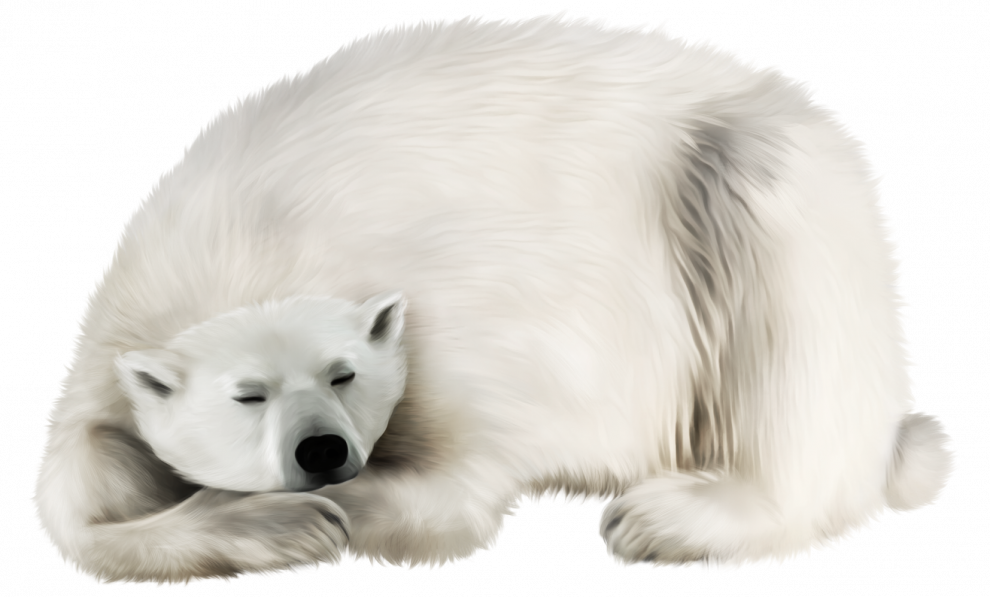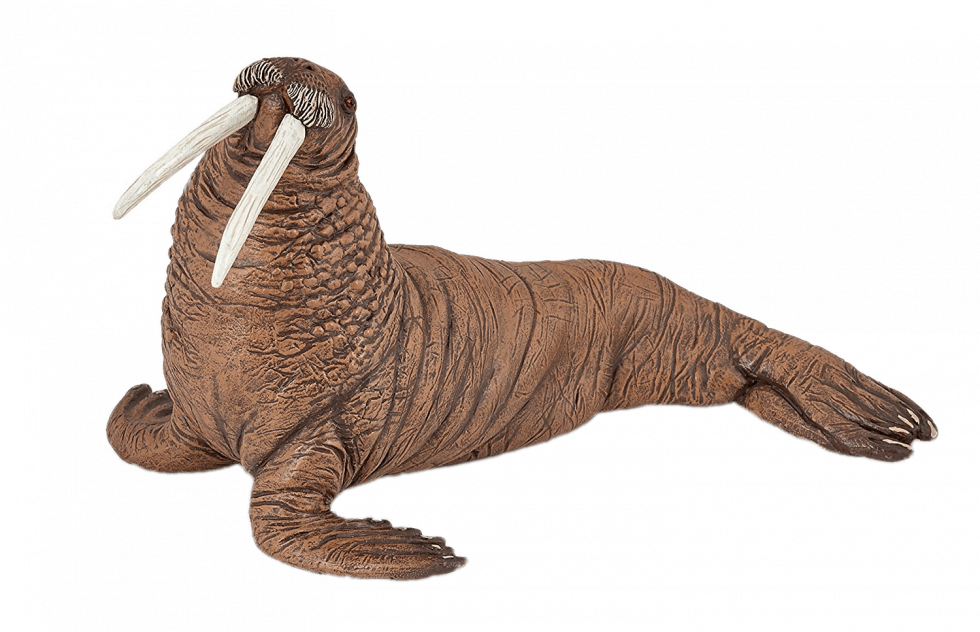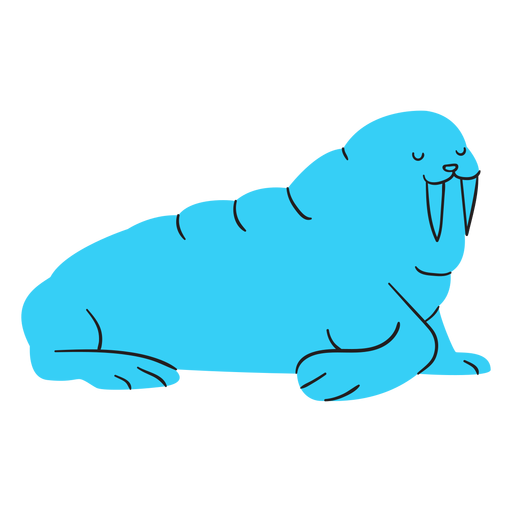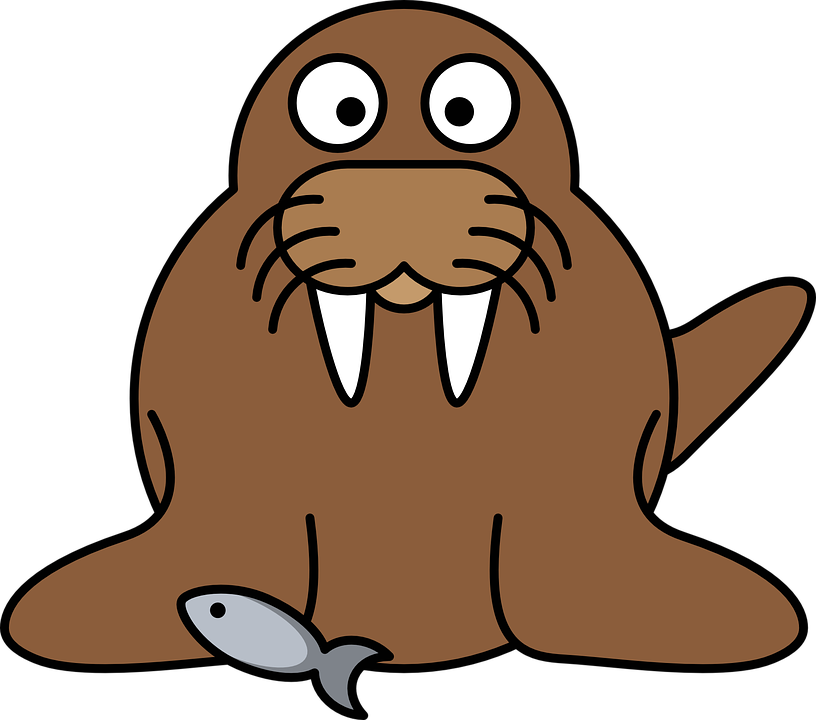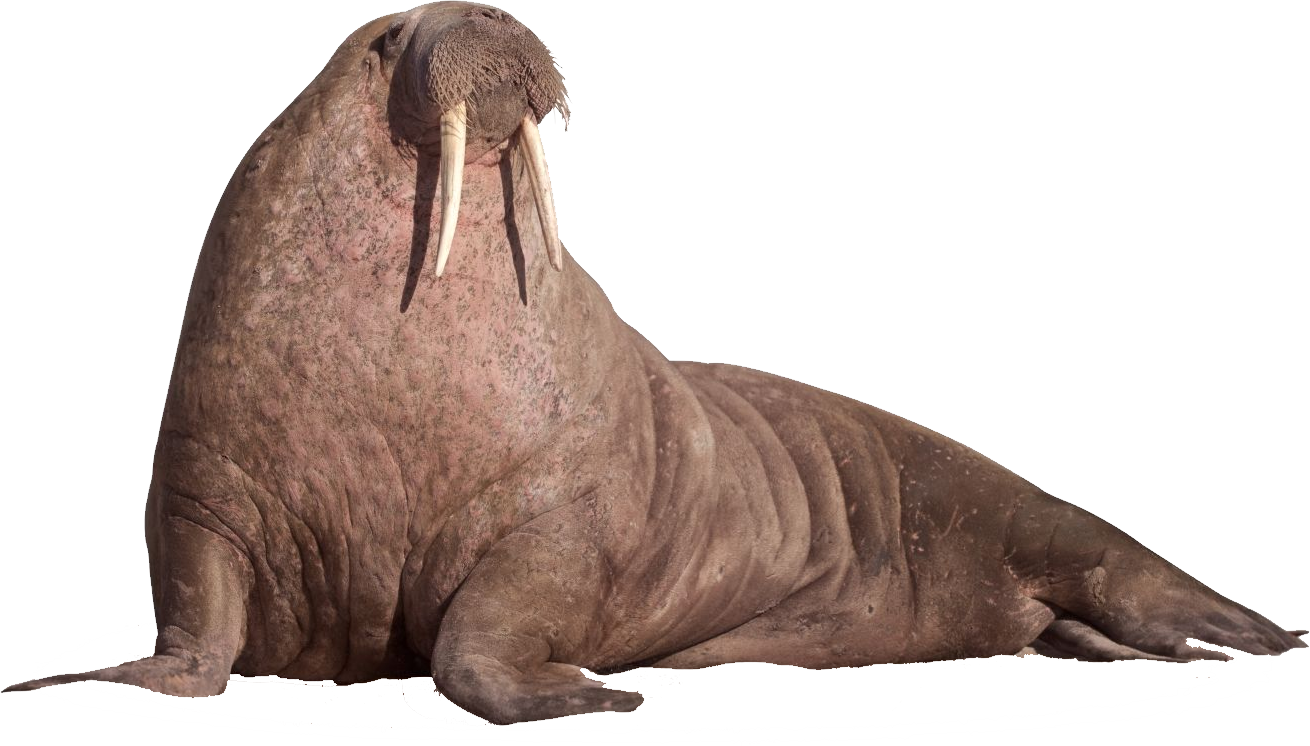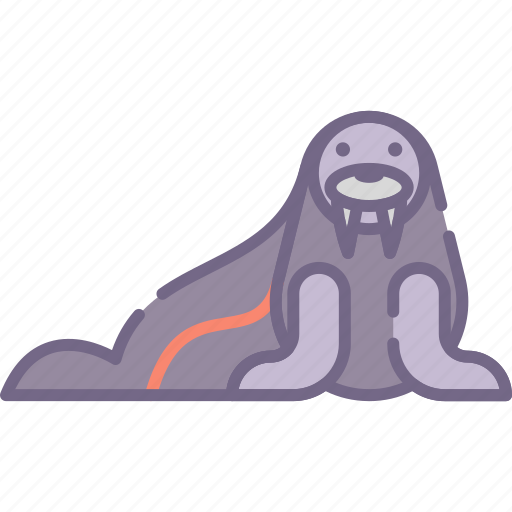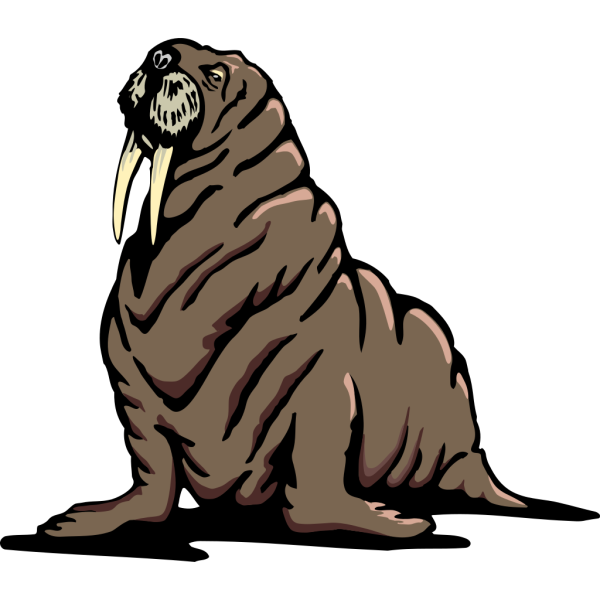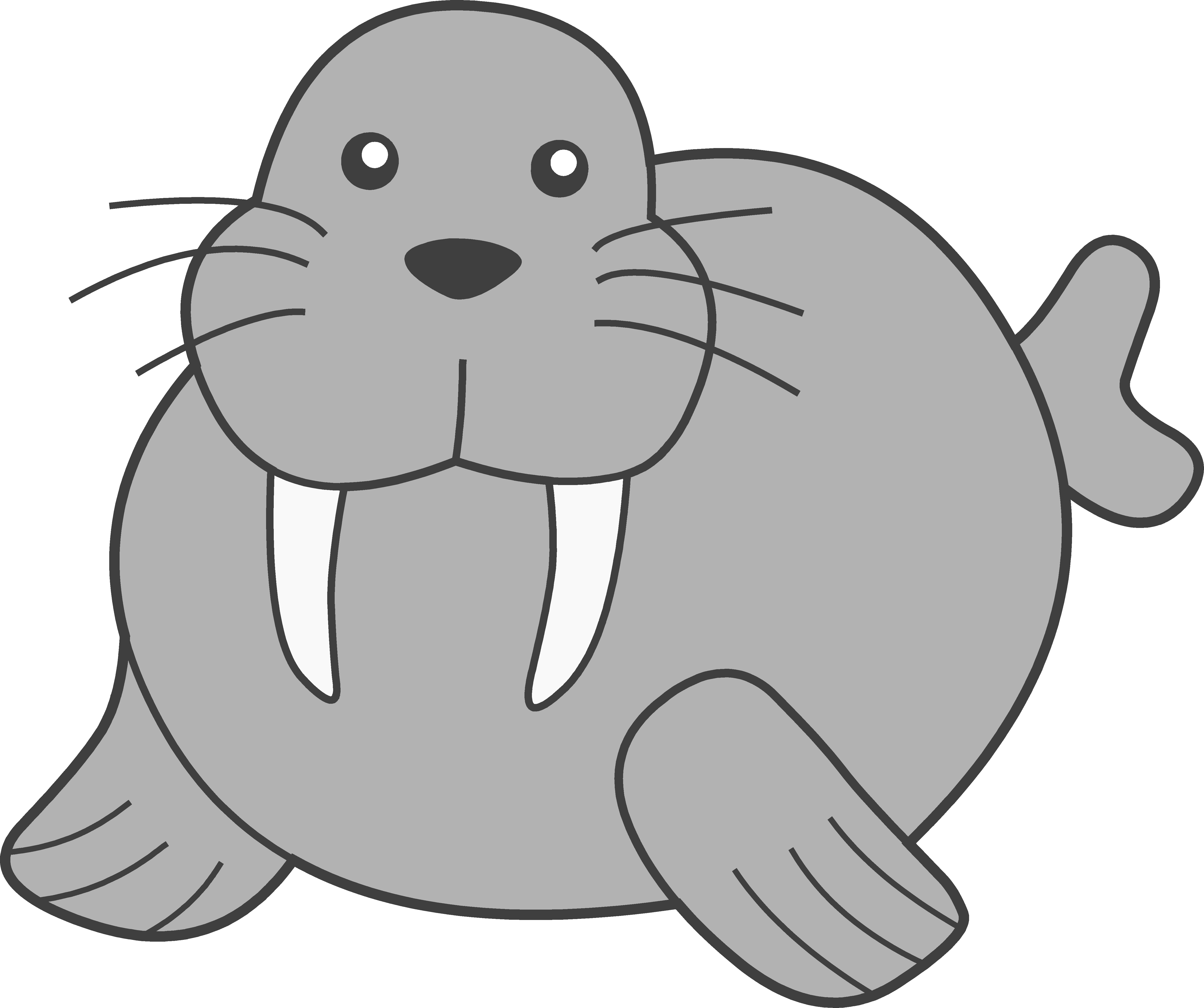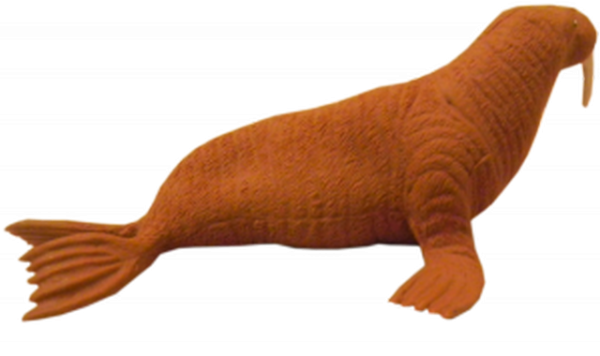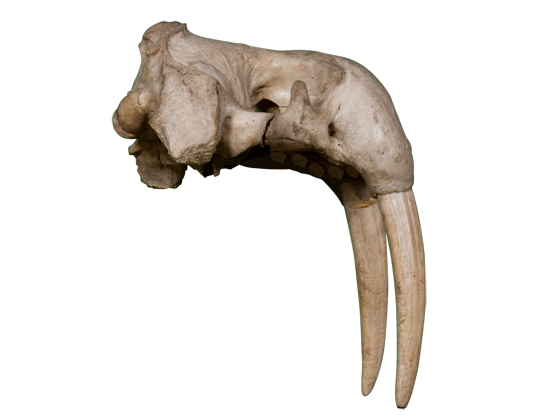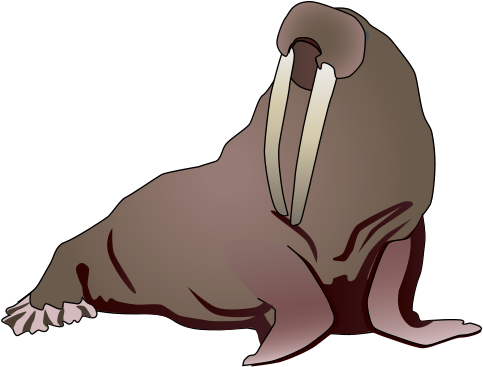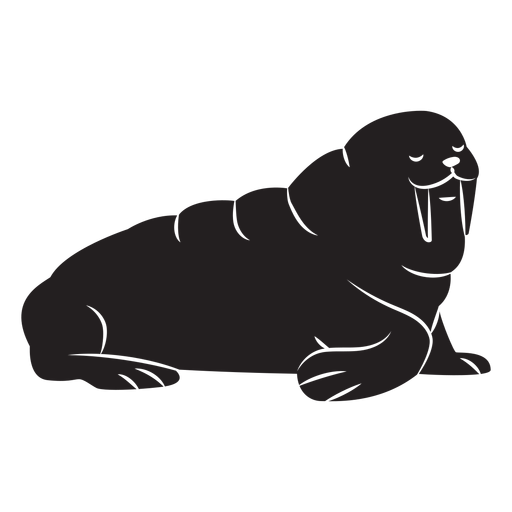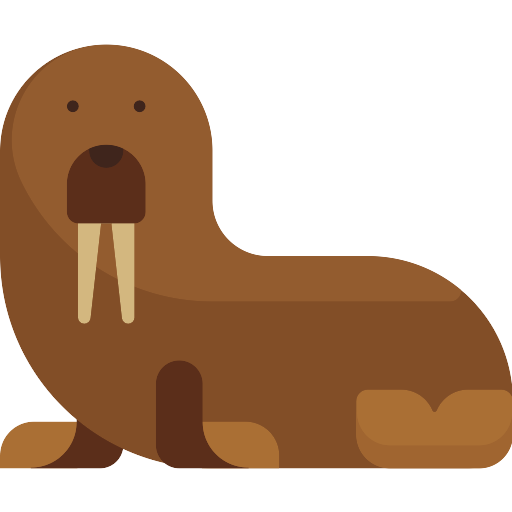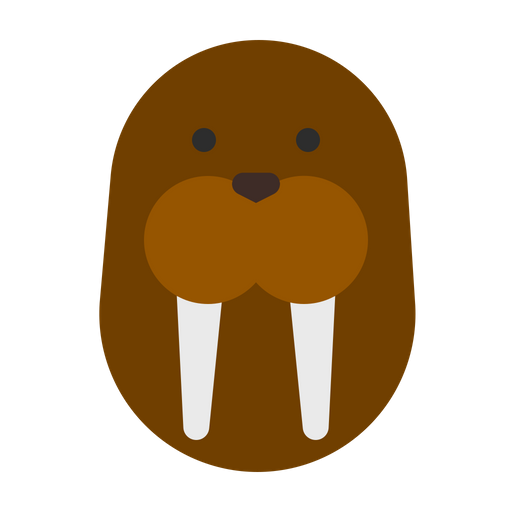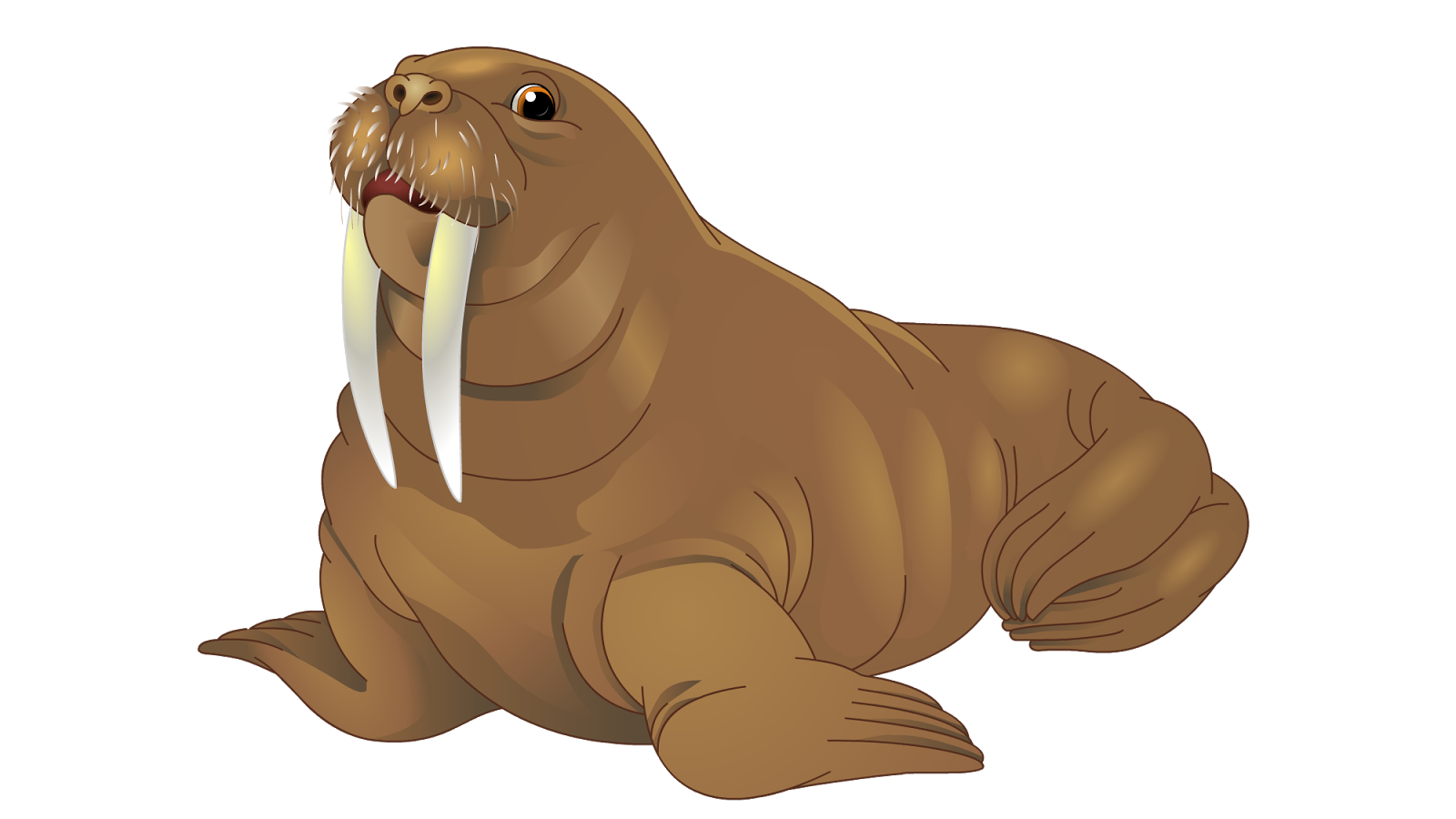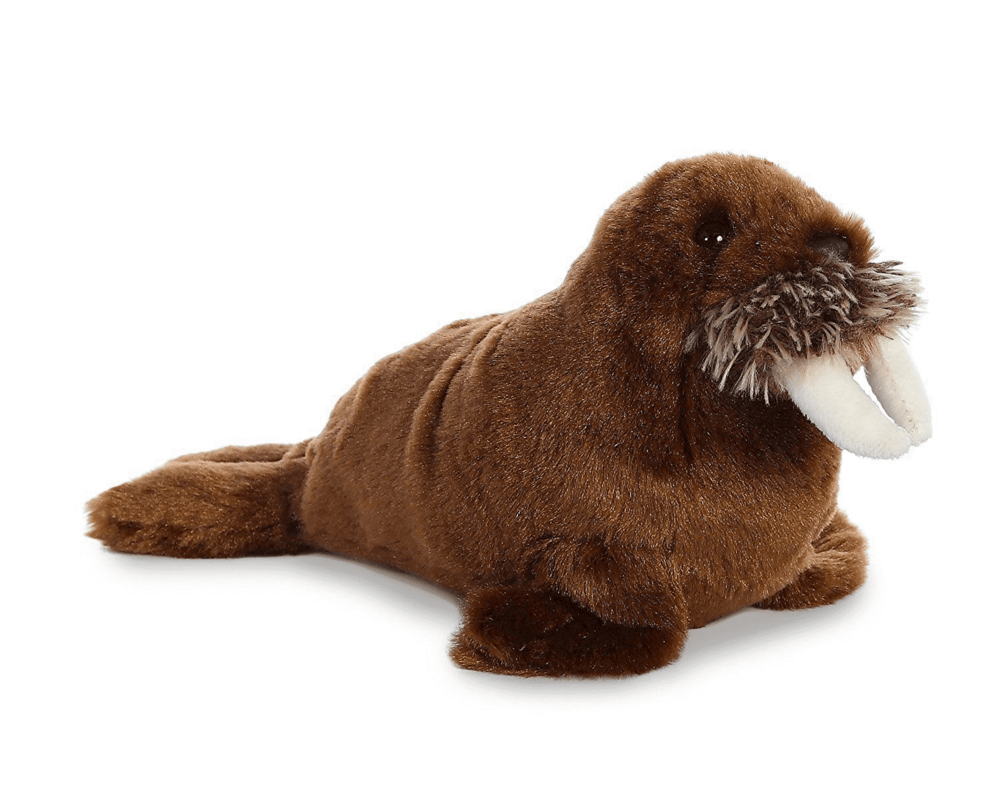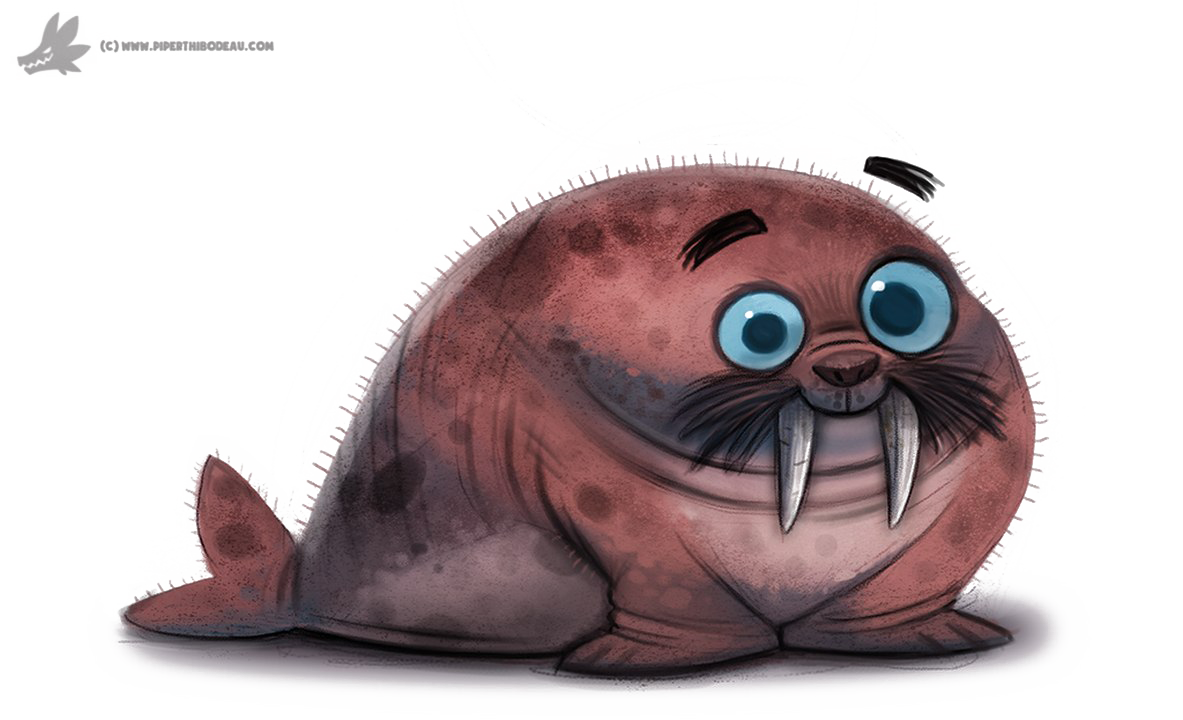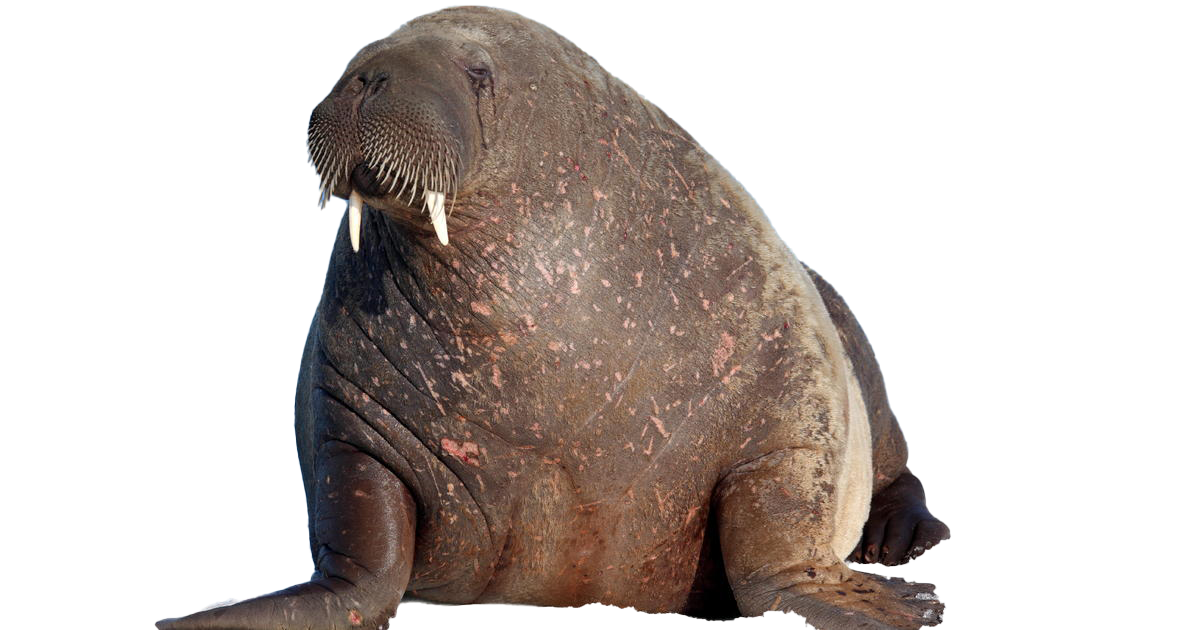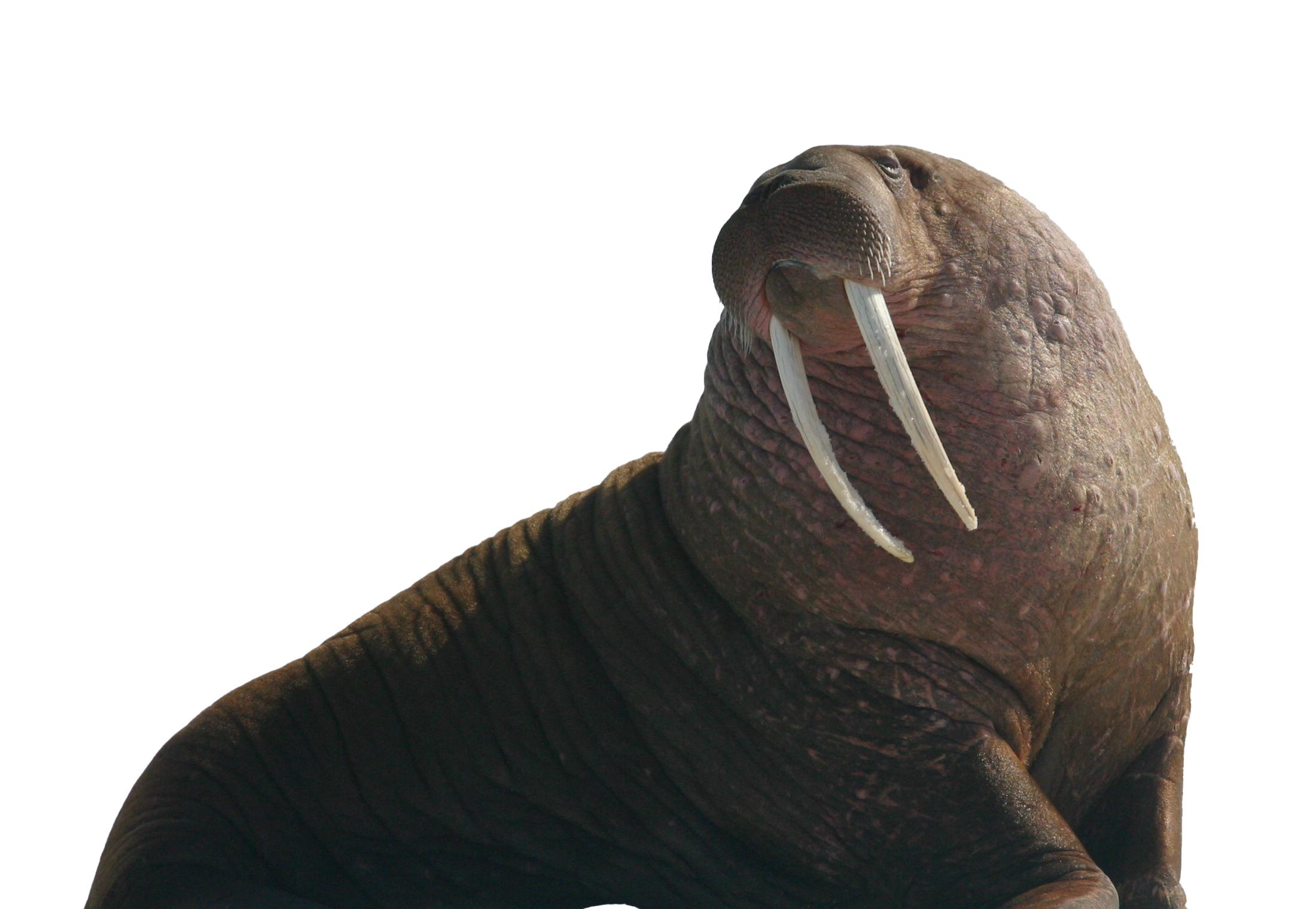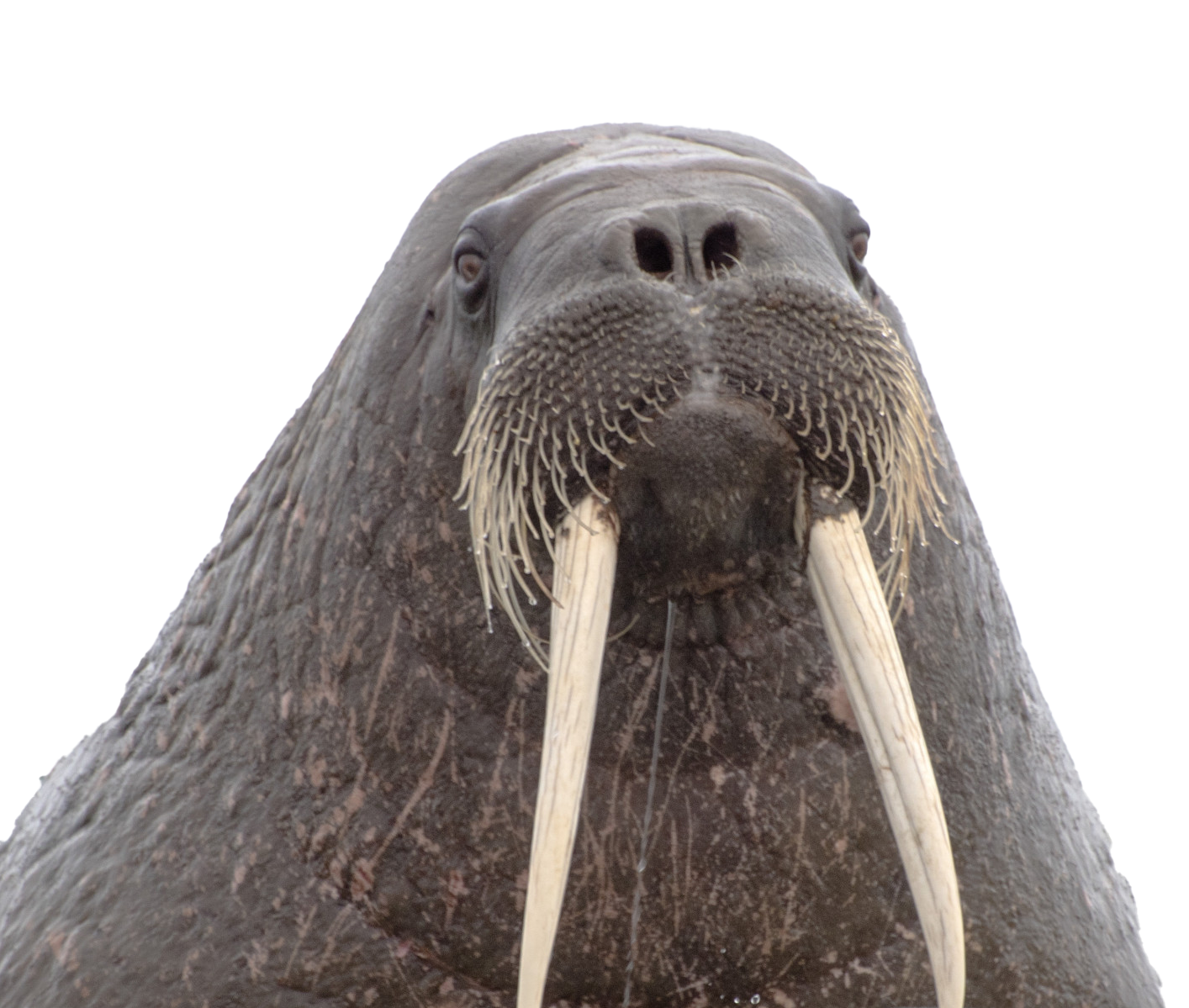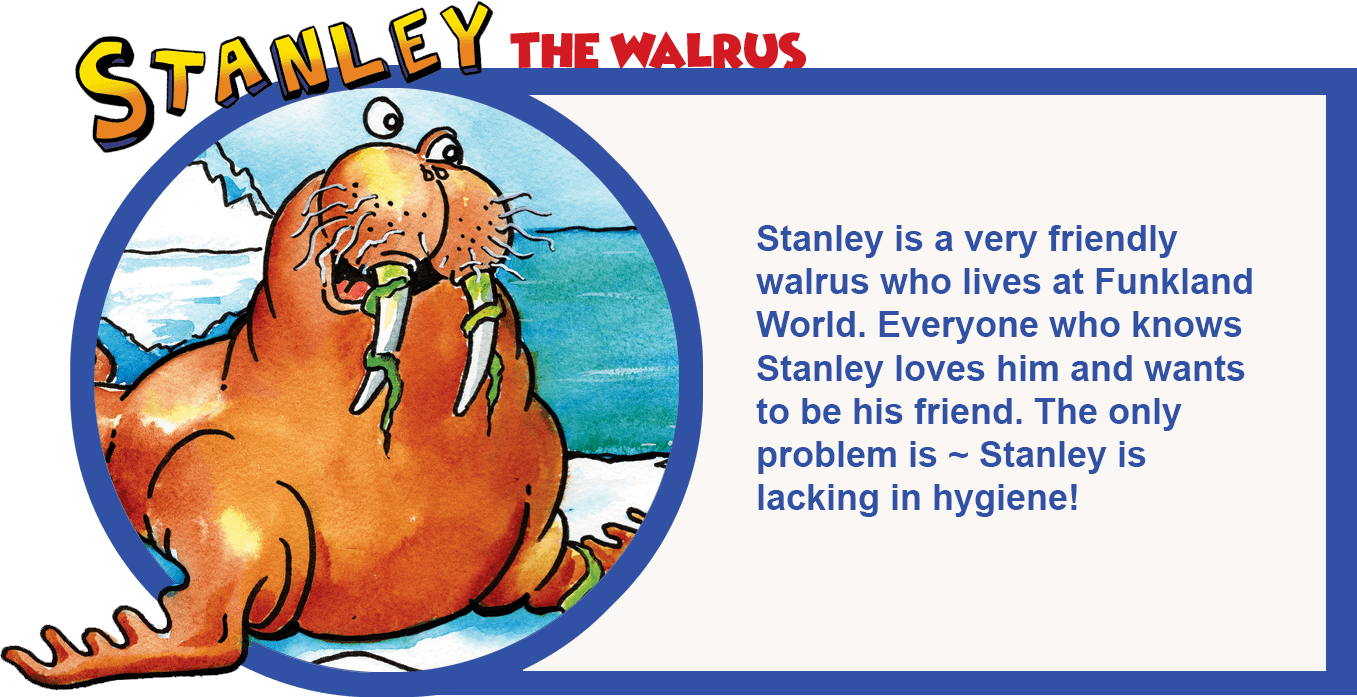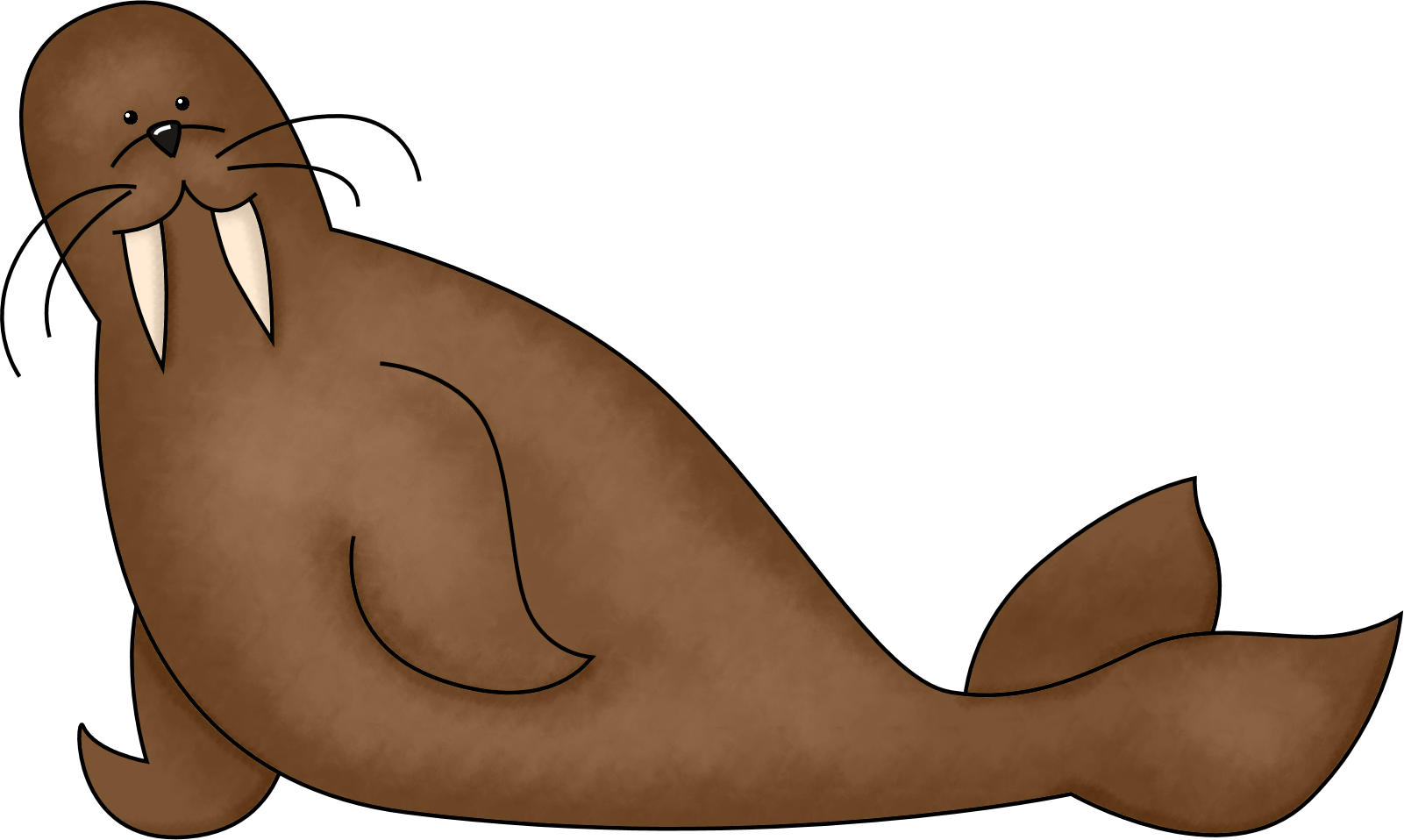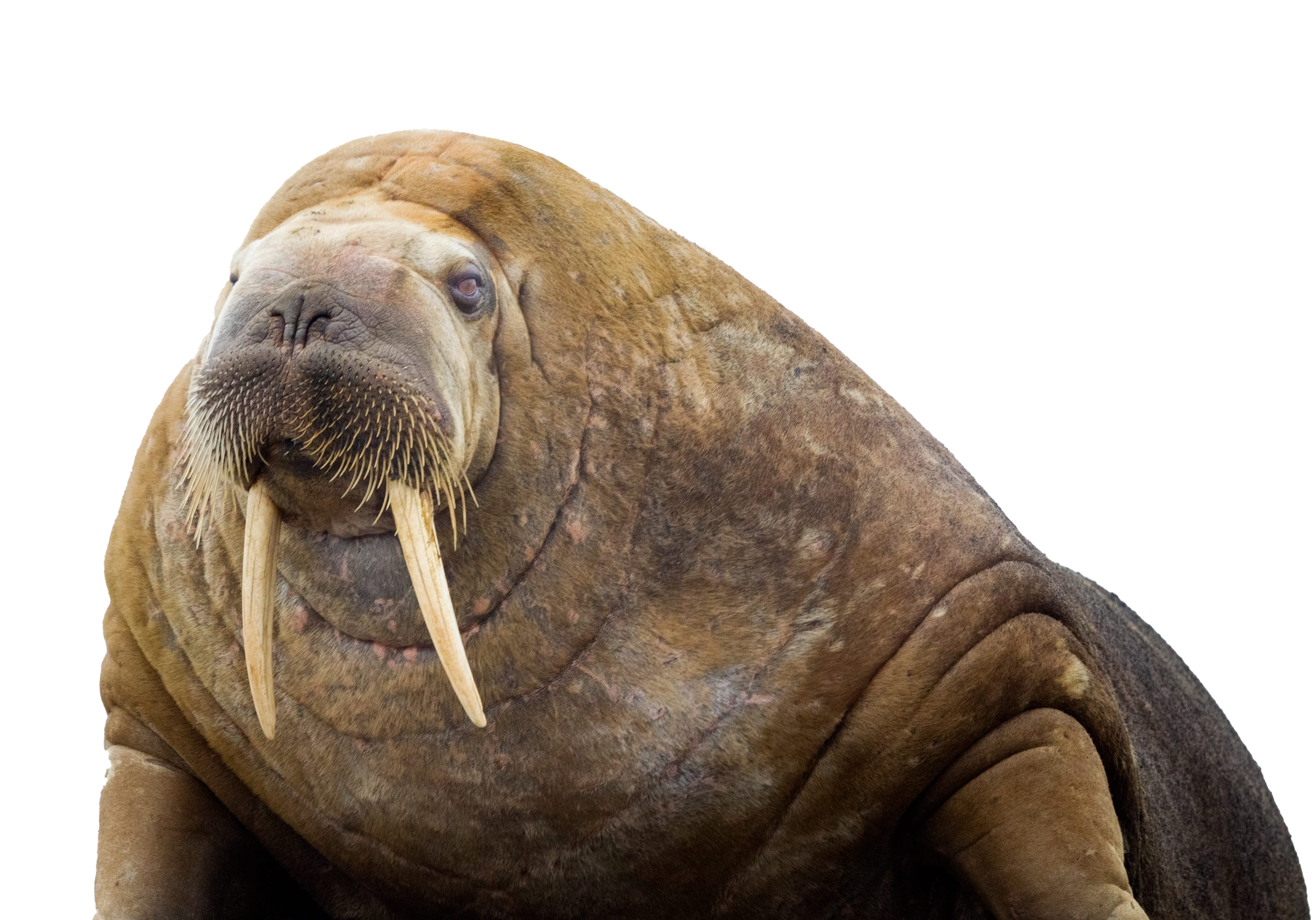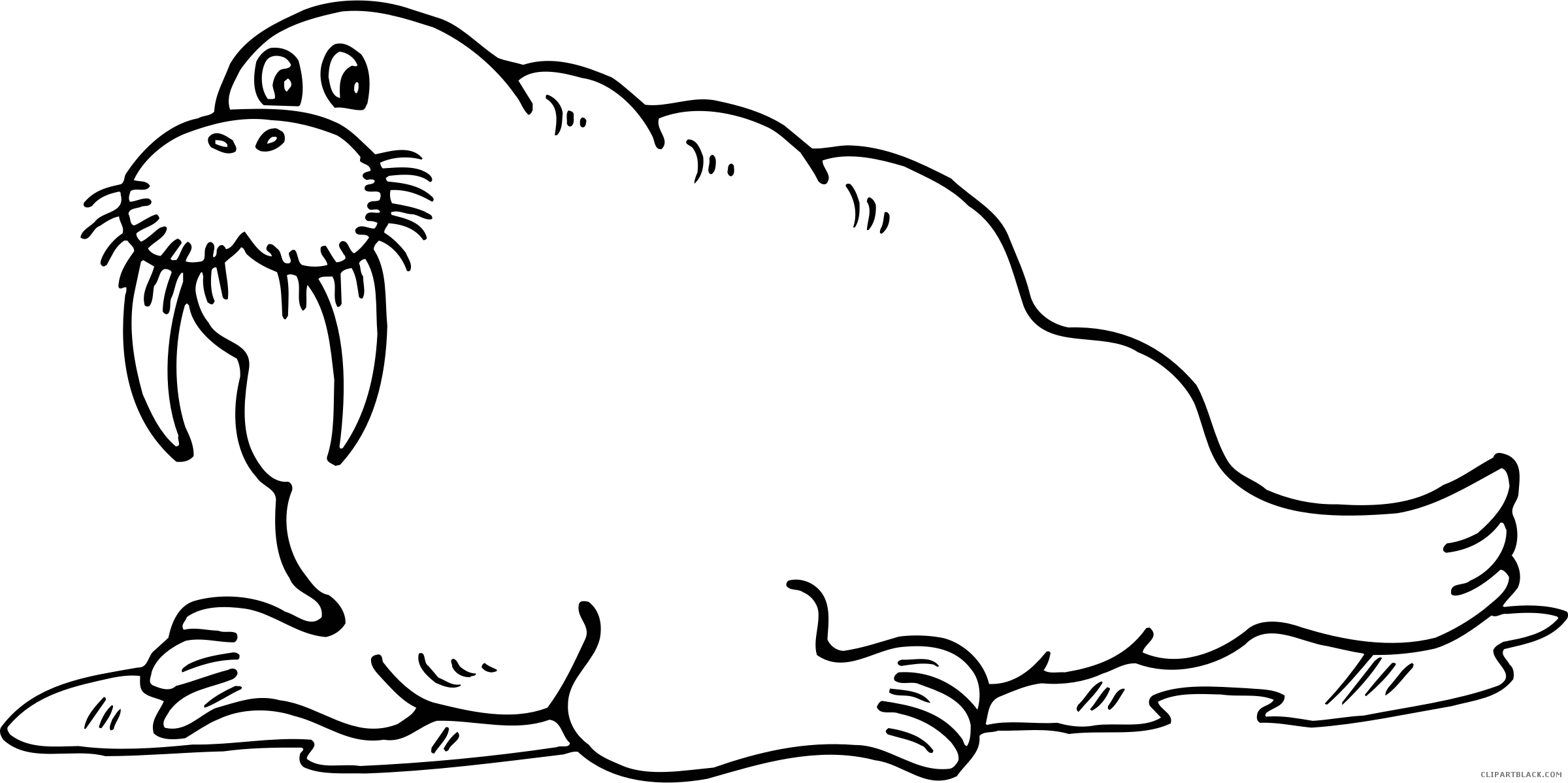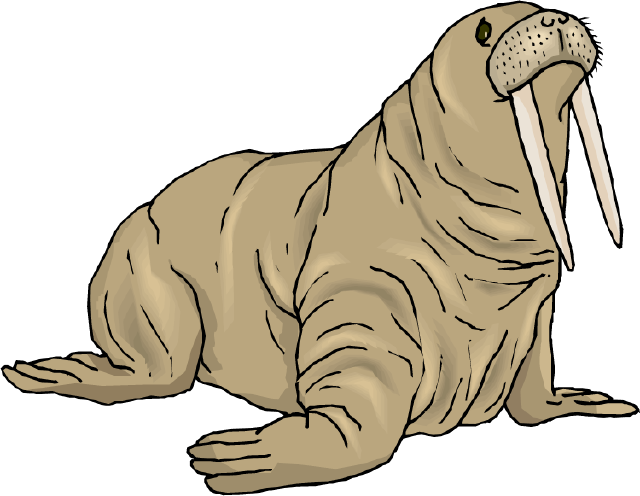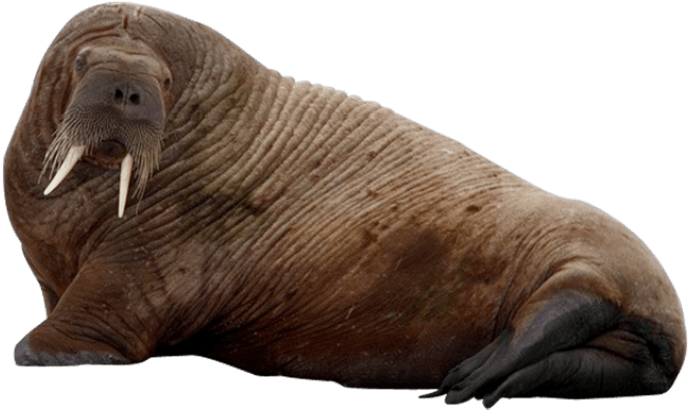Download top and best high-quality free Walrus PNG Transparent Images backgrounds available in various sizes. To view the full PNG size resolution click on any of the below image thumbnail.
License Info: Creative Commons 4.0 BY-NC
The walrus is a huge flippered marine mammal with a patchy distribution in the Arctic Ocean and subarctic waters of the Northern Hemisphere around the North Pole. In the family Odobenidae and genus Odobenus, the walrus is the sole surviving species. The Atlantic walrus (O. r. rosmarus), which resides in the Atlantic Ocean, and the Pacific walrus (O. r. divergens), which dwells in the Pacific Ocean, are two subspecies of this species.
Adult walruses are distinguished by their huge tusks and whiskers, as well as their size: adult males in the Pacific may weigh more than 2,000 kilograms (4,400 pounds) and are only surpassed in size by two species of elephant seals among pinnipeds. Walruses spend much of their time on the sea ice seeking for benthic bivalve mollusks to feed, and they reside largely in shallow seas above the continental shelf. Walruses are sociable creatures with a long lifespan, and they are regarded a “keystone species” in the Arctic marine environment.
Many indigenous Arctic peoples have hunted the walrus for its meat, fat, skin, tusks, and bone, and the walrus has played a significant part in their societies. Walruses were regularly hunted and slaughtered for their blubber, walrus ivory, and flesh during the 19th and early 20th centuries. Walrus populations have been quickly declining over the Arctic. Although populations of Atlantic and Laptev walruses have recovered significantly since then, they remain dispersed and at low levels compared to before human intervention.
The term walrus comes from a Germanic language, and it has been assigned mostly to the Dutch or Old Norse languages. The first component is supposed to be derived from an Old Norse term such as valr (“whale”), while the second portion is thought to be derived from the Old Norse word hross (“horse”). The Old Norse name hrossvalr, which means “horse-whale,” is considered to have been handed down inverted to both Dutch and northern German languages as walros and Walross. Another hypothesis is that it is derived from the Dutch words wal “shore” and reus “giant.”
Rosmarus is a Scandinavian species name. The walrus is called “rosmhvalr” in Iceland and “rostungr” in Greenland in the Norwegian book Konungsskuggsja, which is assumed to date from approximately AD 1240. (walruses were by now extinct in Iceland and Norway, while the word evolved in Greenland). Several place names in Iceland, Greenland, and Norway may have originated from walrus breeding grounds: Hvalfjord, Hvallatrar, and Hvalsnes, to mention a few.
The old English word for walrus, morse, is assumed to have originated in Slavic languages, which took it through Finno-Ugric languages, and eventually (according to Ante Aikio) from a Northern European Pre-Finno-Ugric substrate language. In Russian, моp (mor) is used; in Finnish, mursu is used; in Northern Saami, mora is used; and in French, morse is used. The walrus was initially referred to as the ros marus, possibly a Latinization of mor, by Olaus Magnus, who portrayed it in the Carta Marina in 1539, and this was accepted by Linnaeus in his binomial nomenclature.
The walrus’s reputation as a “terrible creature” is said to have stemmed from a fortuitous resemblance between morse and the Latin word morsus (“a bite”).
Odobenus is derived from the Greek words odous (tooth) and baino (walk), and is based on observations of walruses using their tusks to drag themselves out of the water. Their tusks are referred to as divergens in Latin, which means “turning apart.”
Download Walrus PNG images transparent gallery.
- Walrus Mammal Transparent
Resolution: 746 × 512
Size: 46 KB
Image Format: .png
Download
- Walrus Mammal PNG Pic
Resolution: 850 × 497
Size: 44 KB
Image Format: .png
Download
- Walrus Mammal PNG
Resolution: 470 × 275
Size: 85 KB
Image Format: .png
Download
- Walrus Mammal PNG File
Resolution: 750 × 481
Size: 82 KB
Image Format: .png
Download
- Walrus Mammal PNG Image HD
Resolution: 1388 × 969
Size: 2288 KB
Image Format: .png
Download
- Walrus Mammal PNG Image
Resolution: 801 × 599
Size: 199 KB
Image Format: .png
Download
- Walrus PNG Photo
Resolution: 600 × 600
Size: 59 KB
Image Format: .png
Download
- Walrus Animal PNG Photos
Resolution: 800 × 615
Size: 37 KB
Image Format: .png
Download
- Walrus PNG
Resolution: 493 × 450
Size: 181 KB
Image Format: .png
Download
- Walrus Animal PNG Images
Resolution: 1907 × 1920
Size: 231 KB
Image Format: .png
Download
- Walrus PNG Images HD
Resolution: 776 × 800
Size: 61 KB
Image Format: .png
Download
- Walrus Animal PNG Image
Resolution: 972 × 927
Size: 153 KB
Image Format: .png
Download
- Walrus Animal PNG Pic
Resolution: 512 × 512
Size: 40 KB
Image Format: .png
Download
- Walrus
Resolution: 1280 × 647
Size: 123 KB
Image Format: .png
Download
- Walrus Animal PNG Cutout
Resolution: 885 × 903
Size: 117 KB
Image Format: .png
Download
- Walrus Animal PNG HD Image
Resolution: 2500 × 2500
Size: 2810 KB
Image Format: .png
Download
- Walrus Mammal PNG HD Image
Resolution: 650 × 433
Size: 97 KB
Image Format: .png
Download
- Walrus PNG Images
Resolution: 640 × 433
Size: 245 KB
Image Format: .png
Download
- Walrus Animal
Resolution: 990 × 597
Size: 589 KB
Image Format: .png
Download
- Walrus PNG File
Resolution: 980 × 632
Size: 614 KB
Image Format: .png
Download
- Walrus Animal PNG
Resolution: 512 × 512
Size: 37 KB
Image Format: .png
Download
- Walrus Animal Transparent
Resolution: 816 × 720
Size: 134 KB
Image Format: .png
Download
- Walrus Animal PNG Image HD
Resolution: 1310 × 746
Size: 734 KB
Image Format: .png
Download
- Walrus Animal PNG Clipart
Resolution: 773 × 666
Size: 116 KB
Image Format: .png
Download
- Walrus Animal PNG File
Resolution: 512 × 512
Size: 28 KB
Image Format: .png
Download
- Walrus Mammal PNG Images
Resolution: 600 × 600
Size: 80 KB
Image Format: .png
Download
- Walrus PNG Clipart
Resolution: 5335 × 4466
Size: 192 KB
Image Format: .png
Download
- Walrus PNG Picture
Resolution: 600 × 356
Size: 149 KB
Image Format: .png
Download
- Walrus No Background
Resolution: 550 × 420
Size: 130 KB
Image Format: .png
Download
- Walrus Animal PNG Photo
Resolution: 483 × 367
Size: 59 KB
Image Format: .png
Download
- Walrus Mammal PNG Clipart
Resolution: 512 × 512
Size: 31 KB
Image Format: .png
Download
- Walrus Animal PNG Picture
Resolution: 512 × 512
Size: 17 KB
Image Format: .png
Download
- Walrus PNG Cutout
Resolution: 512 × 512
Size: 9 KB
Image Format: .png
Download
- Walrus Animal PNG Images HD
Resolution: 512 × 512
Size: 28 KB
Image Format: .png
Download
- Walrus Animal No Background
Resolution: 1600 × 900
Size: 326 KB
Image Format: .png
Download
- Walrus PNG HD Image
Resolution: 654 × 659
Size: 252 KB
Image Format: .png
Download
- Walrus Transparent
Resolution: 1000 × 809
Size: 577 KB
Image Format: .png
Download
- Walrus PNG Image HD
Resolution: 1183 × 720
Size: 650 KB
Image Format: .png
Download
- Walrus PNG Pic
Resolution: 1200 × 630
Size: 678 KB
Image Format: .png
Download
- Walrus PNG Image
Resolution: 2200 × 1520
Size: 2490 KB
Image Format: .png
Download
- Walrus PNG Photos
Resolution: 1414 × 1199
Size: 1466 KB
Image Format: .png
Download
- Walrus Mammal PNG Cutout
Resolution: 1357 × 697
Size: 209 KB
Image Format: .png
Download
- Walrus Mammal PNG Photo
Resolution: 1601 × 958
Size: 399 KB
Image Format: .png
Download
- Walrus PNG Free Image
Resolution: 2909 × 2033
Size: 4664 KB
Image Format: .png
Download
- Walrus Mammal PNG Photos
Resolution: 2400 × 1198
Size: 116 KB
Image Format: .png
Download
- Walrus Mammal PNG Picture
Resolution: 640 × 496
Size: 115 KB
Image Format: .png
Download
- Walrus Mammal
Resolution: 688 × 411
Size: 156 KB
Image Format: .png
Download

